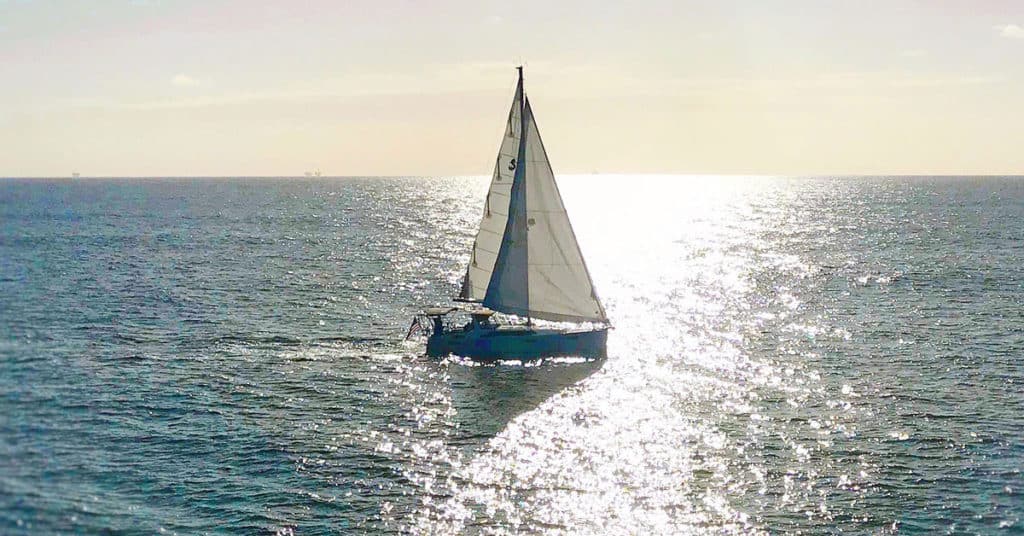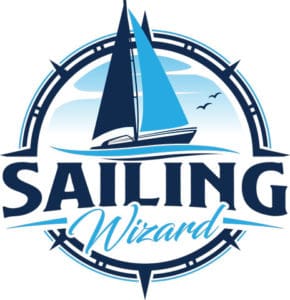Sailing alone has a certain sense of freedom and adventure to it, which appeals to many people. Going out on the water with just the wind, water, yourself, and your boat can be quite relaxing and enjoyable, but what type of risks does sailing alone carry?
Sailing alone comes with many risks and can be dangerous if you are not a well-experienced sailor. When you are sailing by yourself, you are solely responsible for your well-being and the boat. Things can quickly spiral out of control if something goes wrong, and others are not there to assist you.
Sailing by yourself can seem quite intimidating and scary to the novice sailor, but with the necessary skills, proper precautions, and information, it can be an enjoyable and fun activity. So let’s just get right into it and explore the safety of sailing alone and how you can minimize the risk so you stay safe, healthy, and having fun while you’re out on your solo voyage.

Is It Safe to Sail Alone?
Sailing has many inherent risks that come with it, no matter how safe and prepared you are. These risks multiply when you go out sailing by yourself because there is no one else to assist you in the case of an accident, miscalculation, or tragic event.
According to a study by Rhode Island Hospital, sailing has a 1.19 fatality rate per million sailing-days. The same study says that the primary contributing factor in 28% of sailing deaths was hazardous waters or the weather. In addition, 70.1% of deaths were due to falling overboard or capsizing the vessel.
These statistics aren’t meant to discourage or scare new sailors, but instead, are intended to point out the safety concerns inherent in sailing. You should be aware of these statistics, so you can work to be safer while out on the water and prevent accidents from occurring.
When you go out sailing by yourself, these already-present risks multiply because the responsibility of sailing safely and correctly comes down to only one person: you.
It is essential to have the proper training, experience, equipment, and skills BEFORE sailing alone to ensure it is as safe as possible. There will always be risks when it comes to sailing, so it is essential to mitigate any additional risks above and beyond the inherent ones.
The Risks of Sailing Alone
There are several increased risks over regular sailing when you go out solo. Most of these risks are because you only have one pair of hands on-deck, but there are many workarounds and ways to minimize these risks with the proper training and equipment.
Some of the most significant risks while sailing alone are:
- Falling overboard and being unable to get back into your boat
- Sleeping while you should be trimming sails and maintaining your boat
- Being solely responsible for your safety, the boat, and any problems that arise
One of the most significant risks that come with sailing alone is the risk of falling overboard. If you are completely alone and you fall off of your boat, there is a good chance that it will be impossible, or at least extremely difficult, to get back on board.
Another hazard with sailing alone is the need, and difficulty of, sleep. There needs to be someone always trimming sails and keeping a lookout when you are sailing, and if there is only one person on board, it is impossible to maintain the boat and sleep at the same time.
There are many ways solo sailors overcome this sleep issue, such as sleeping in 20-minute chunks, anchoring for the night, or only sailing for short periods where sleep is not necessary.
The most considerable risk while sailing alone is that there is only one person (you) to maintain the boat, properly sail, make sure you stay safe and healthy, and deal with any problems or tasks that arise. No one else can help or assist you when you are out sailing alone, at least for a while, so it is vital to be competent in your sailing skills and be ready for the unexpected.
Safety Tips for Sailing Alone
Now that we’ve gone over the risks and safety concerns of sailing alone, we should now discuss a few tips to keep you safe if you decide to go out sailing by yourself.
Here’s a great video to get you started:
While I’m not going to list it as a separate safety tip, one of the biggest things you can do to improve your safety while sailing alone is to have the right experience and training. To handle yourself competently on the water, you must know what you are doing.
Before even attempting to go sailing solo, it is crucial to have the proper training and be prepared to handle your boat alone.
Besides having the necessary sailing knowledge, competence, and skills, there are a few more tips specific to sailing alone that can dramatically improve your safety. So let’s just quit teasing them and get right into it!
Tether Yourself to Your Boat
As I mentioned earlier, one of the most significant risks with sailing alone is falling overboard and being unable to get back into your boat. When you are sailing solo and fall off of your boat, there is no one to turn the craft around to pick you up. In most cases, it is nearly impossible to swim fast enough to catch back up with your boat and get on board again. While it might seem simple, the best way to avoid falling overboard is to tether yourself to your boat.
There are many ways to go about this, and it comes down to what boat you have and your preferences in tethering. Many people like to have a system of jacklines that run from bow to stern and allow you to hook on a harness, but there are many other alternatives.
No matter the weather or conditions, it is super essential to tether yourself to your boat when sailing alone because the repercussions for not doing it could be quite catastrophic.
Always Wear a Life Jacket
Even if you follow the above tip and tether yourself to your boat, there is always a chance that you could end up in the water, so you must always have a personal floatation device on you. There is no way of knowing when you will need it, so it is crucial that you don’t go out on the water without a flotation device.
Personal floatation devices (PFDs) come in many different forms. The most common type is a simple lifejacket, but there are more specialized floatation devices as well. Buoyancy aids (a lighter and more flexible kind of lifejacket) are prevalent among sailors because they allow for a wide range of motion but will keep you afloat in the event you end up in the water.
Overall, I cannot stress enough how important it is to wear a PFD while you’re out sailing. Sailing alone already has many hazards, so you should always wear a lifejacket to attempt to mitigate some of them and make your whole solo sailing experience safer.
Notify Others of Your Plan
Whether you are sailing with others or alone, it is always good practice to tell someone where you are going, when you expect to get there, and when you plan on returning. There are many reasons for this practice, but doing so could potentially save your life.
By telling someone who is not going sailing with you about your plans, there is a better chance of you receiving help should you capsize, fall overboard, or need emergency attention. You never know when a sudden weather change or catastrophic event could occur, so it is good to have at least one person who will notify authorities if you aren’t back on time.
Make sure to update the person who knows your plans throughout your excursion and inform them of any changes to your schedule, no matter how small they might seem.
Have Emergency Equipment Onboard
The last tip that I have for you is to ALWAYS have plenty of emergency equipment on board with you. You never know when something will go wrong, so it is always good to be prepared and have the necessary equipment.
- Extra personal floatation devices
- Throwable floatation devices
- Medical kit for small injuries and scrapes
- Fire extinguisher
- Visual and audible signaling devices
- Emergency radio
The list of emergency supplies that you should have on board with you could get pretty extensive, but it is absolutely critical for your safety and others to have the basics, at least.
Sailing alone has its many risks and hazards, but in the end, it is an enjoyable and relaxing way to practice your sailing skills and enjoy being out on the water. There are very few cases where being TOO prepared is a bad thing, and sailing alone is a time where you don’t want to skimp on emergency supplies.
